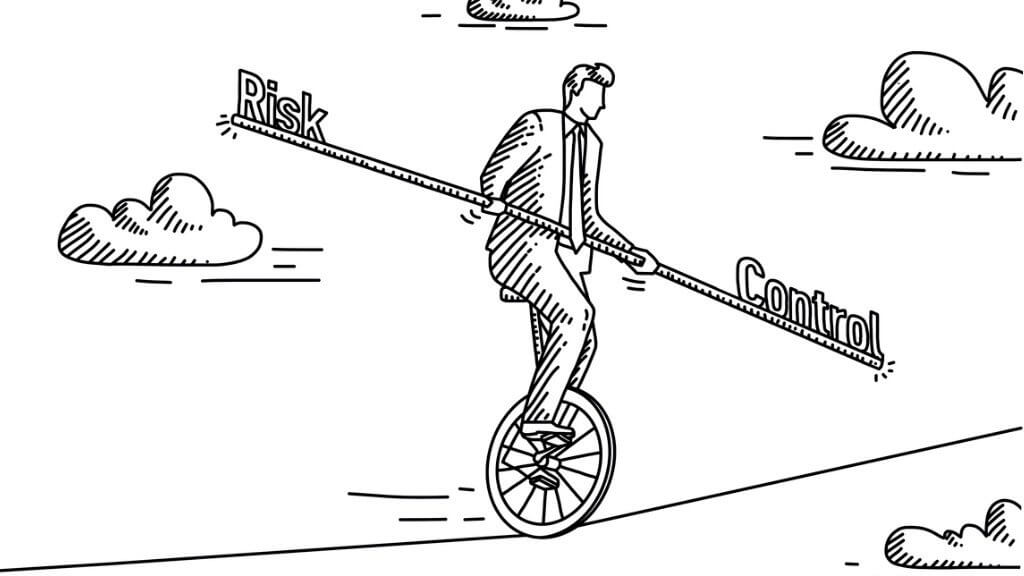Agility And The Art Of Control

We are living through a period of heightened volatility, uncertainty, complexity and ambiguity (the infamous “VUCA” criteria).
Against such a political, economic and social backdrop, developing greater agility – the ability to respond, quickly – has risen up many organisations’ priority lists.
Indeed, the most frequently cited benefit of adopting agile practices is the ability to manage changing priorities[1]. However, how do you ensure that, when managing these changes, you do not lose control of the overall direction and essence of your organisation?
RAC or ruin?
It begins by recognising that control is not something that is used to manage agility, but rather is part of it. An organisation’s agility can be judged against three criteria:
| CRITERION | DESCRIPTION |
| Responsiveness | Responsiveness is the speed with which one reacts to organisational or market stimuli, and it can be improved in two ways:
1. Anticipating change more effectively 2. Reacting more quickly to changes when they happen A classic example of this aspect of agility is Zara, the clothing retailer, which can get clothing from the catwalk to the shop floor in 4 – 6 weeks. |
| Adaptability | Responsiveness has two scenarios: in the first, the organisation is already set-up to respond to a specific stimulus and does so; in the second, it must first change (e.g. processes; structures; systems; people) to be able to respond. The effectiveness with which an organisation can do the latter is the measure of its adaptability.
Consider the ways in which restaurants have adapted their business and operating models in the face of growth in delivery third parties such as Deliveroo, Just Eat and Uber Eats. |
| Control | Responsiveness and adaptability require control to maintain consistency and ensure that the organisation does not simply lurch from one stimulus to the next. Control requires both direction and the appropriate measures to keep the organisation on course. |
These “RAC” criteria – responsiveness, adaptability and control – must all be satisfied for an organisation to be deemed “agile”. But how should organisations do so?
The world in 4D
Practical agility is experienced in 4D: direction, data, design, and delivery. Collectively, these are the mechanisms through which to drive your “RAC Rating”:
| CRITERION | DESCRIPTION | “RAC” RELEVANCE |
| Direction | Having a clear organisational purpose, governance structure and leadership ensures that you are consistent in how you adapt. | Determines what and how to adapt (adaptability), and parameterises how those changes are made (control) |
| Example: In late 2008, outdoor apparel retailer Patagonia changed its mission to the terse statement “We’re in business to save our home planet”. Whilst the business has always put the environment at the heart of its approach, this sharp distillation brought unequivocal clarity and direction to its decision-making and has had direct impact on many aspects of the business – from regenerative agriculture through to recruitment[2] (and that is just the “r” words). | ||
| Data | Agility is data hungry – it demands systematic organisational (internal) and market (external) intelligence to understand when and how to adapt. | Drives all three – anticipating, identifying and informing changes (responsiveness; adaptability) and expressing the potential and actual impact of such changes (control) |
| Example: Data has long been at the heart of agility – from dynamic pricing in air travel through to predictive analytics in hospital resource planning. As technologies, processes and capabilities develop and improve, the shift from diagnostic to predictive, and ultimately prescriptive, analytics will continue to shape the agility of organisations. | ||
| Design | There is no agility without operational flexibility; and it requires this flexibility to be designed into the operating model and very culture of the organisation. | Determines the extent to which an organisation can respond quickly (responsiveness) and adapt to change (adaptability).
Organisations must embrace the concept of “Dynamism by Design” – the method by which agility is “designed into” the organisation through people, processes, technology and data. |
| Example: Designing a flexible workforce appropriately and ethically is a source of heated debate in a growing “gig economy”. A 2018 report by the World Economic Forum[3] identifies five sources of workforce input:
1. Core workforce: Permanent employees filling a range of (changing) roles 2. Company affiliates: External associates with a good understanding of, and strong association with, the organisation (e.g. alumni) 3. Partners: Talent provided by outsourcing/managed service providers 4. Publicly available talent: Specialised talent sourced and/or managed by a third party 5. Consumers: Crowdsourcing talent to solve problems, get ideas, gather data and complete field work Every category other than the core workforce offers the opportunity to “plug and play” capacity and capability when required, allowing companies to scale and skill up temporarily when circumstances demand it. The rise of experienced freelancers and next generation temp agencies are making this opportunity increasingly accessible. |
||
| Delivery | In an increasingly VUCA world, the traditional impermeable barrier between strategy and operations needs to open up to a new managerial osmosis, as agility feeds off action: testing, learning and iterating. | Delivery is a dialogue between your organisation and your customers, suppliers and other key stakeholders, and between your strategy and your operational reality; the learning this provides will drive your responsiveness and adaptability through your governance (control). |
| Example: Many of the “challenger models” in established industries are based on alternative models of delivery such as subscription, rental (vs. own) or “as a service” offerings. Looking at the automotive industry alone, the shift from buying to leasing is merely the first step on a journey that could lead all the way to some of us not owning our own car at all in the future[4]. | ||
A “control” dimension is present across all four of these “Ds”, from the purpose and values that shape an organisation through to the data, structure and processes through which it governs.
The challenge for organisations is to ensure they maintain their discipline in these areas in the heat of agile battle.
Ralph Fernando is author of Agile Strategy: How to create a strategy ready for anything, published by FT Publishing.
[1] The 13th annual State of Agile report, page 8. Available at: https://explore.versionone.com/state-of-agile/13th-annual-state-of-agile-report
[2] See https://www.fastcompany.com/90280950/exclusive-patagonia-is-in-business-to-save-our-home-planet [accessed 08/07/19]
[3] WORLD ECONOMIC FORUM, 2018. Operating Models for the Future of Consumption [viewed 01 May 2018]. Available from: https://www.weforum.org/reports/operating-models-for-the-future-of-consumption
[4] https://media.ford.com/content/fordmedia/feu/en/news/2015/05/26/ford-brings-dynamic-car-sharing-experiment-to-london–first-serv.html




